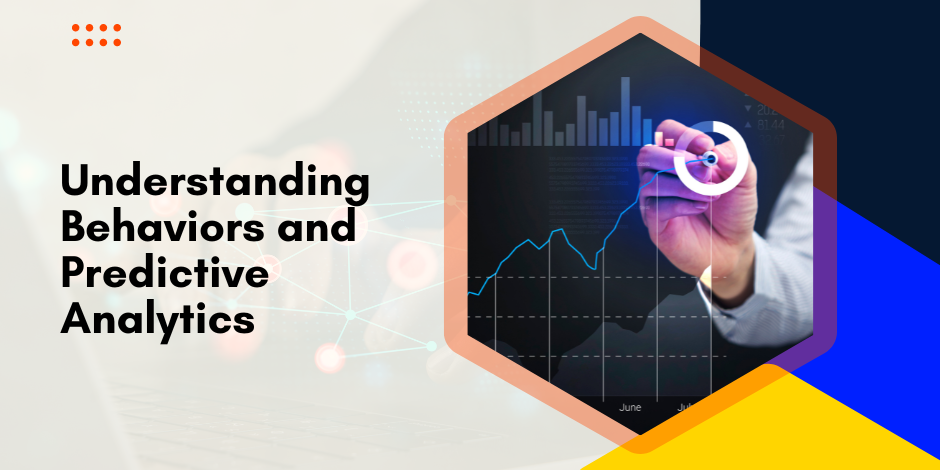Understanding Behaviors and Predictive Analytics: Leveraging Data for Marketing Success

Stay Informed With Our Weekly Newsletter
Receive crucial updates on the ever-evolving landscape of technology and innovation.
Data has become the lifeblood of marketing success in today’s digitally-driven world.
Organizations now have access to vast amounts of information that can help them understand consumer behaviors and make data-driven decisions.
One powerful tool that has emerged in recent years is predictive analytics, which employs advanced algorithms to forecast future events or behaviors based on historical data patterns.
By harnessing the power of analytics, organizations can gain valuable insights into consumer behaviors and optimize their marketing strategies for maximum impact.
The intersection of behavior and predictive analytics

A deep understanding of consumer behavior is at the heart of every successful marketing campaign.
In marketing, behavior refers to the actions, preferences, and choices exhibited by individuals or groups that impact their engagement with a brand.
By analyzing these behaviors, marketers can uncover valuable insights that drive their decision-making processes and improve their marketing efforts.
Predictive analytics uses statistical models and machine learning (ML) algorithms to analyze data and predict future outcomes.
Predictive analytics can identify patterns and trends in consumer behavior data, providing marketers with actionable insights that enable targeted marketing efforts.
When applied together, the intersection of behavior and analytics allows marketers to understand their audience better, enhance personalization efforts, and optimize marketing strategies.
Defining behavior in marketing
Behavior in marketing can be broadly categorized into two types: explicit and implicit.
Explicit behavior refers to actions consciously taken by individuals, such as making a purchase, clicking on an ad, or subscribing to a newsletter.
Conversely, implicit behavior encompasses actions that are indirectly observed or inferred through data analysis, such as spending patterns, browsing habits, or social media interactions.
Understanding both explicit and implicit behaviors is essential for marketers looking to create highly personalized and targeted marketing campaigns.
By analyzing explicit behaviors, marketers can gain insights into consumers’ direct actions, while implicit behaviors provide a deeper understanding of consumers’ underlying motivations and preferences.
The role of analytics in understanding behavior
Predictive analytics is crucial in decoding consumer behaviors. It leverages historical data and identifies patterns, correlations, and trends.
By analyzing data, analytics algorithms can identify hidden relationships and predict future behaviors accurately.
With these illuminations, marketers can make informed decisions about their marketing campaigns, such as targeting specific customer segments, tailoring messaging to individual preferences, or optimizing the timing and placement of advertisements.
By understanding consumer behaviors through analytics, marketers can significantly improve the effectiveness of their marketing efforts.
Moreover, the intersection of behavior and analytics opens up exciting possibilities for marketers to delve deeper into consumer psychology.
By combining behavioral data with psychological theories and models, marketers can understand why consumers make confident choices and how they can influence them.
For example, by analyzing explicit behaviors, marketers may discover that a desire for healthier lifestyles and environmental sustainability drives consumers who frequently purchase organic food.
By understanding this underlying motivation, marketers can tailor their messaging to highlight their products’ health benefits and eco-friendly aspects, effectively appealing to this consumer segment.
Similarly, by examining implicit behaviors, marketers may uncover that consumers who spend significant time browsing fashion websites tend to follow the latest trends and seek validation from their peers.
With this knowledge, marketers can create targeted advertising campaigns that showcase trendy products and incorporate social proof elements, such as user-generated content or influencer endorsements, to tap into the consumers’ desire for validation.
The importance of data in marketing

Data is the driving force behind successful marketing campaigns.
With the rise of digital channels and the proliferation of online shopping, businesses now have access to unprecedented data about consumer behaviors, preferences, and interactions.
Marketers can gain insights into customer demographics, purchasing habits, website interactions, and more by analyzing this data.
These insights enable businesses to identify trends, uncover opportunities, and make data-driven decisions, optimizing their marketing strategies.
How data drives marketing decisions
Data availability allows marketers to move beyond traditional guesswork and make informed decisions based on solid evidence.
Organizations can analyze customer data to identify their most profitable customer segments, understand their needs and preferences, and tailor marketing campaigns to target those segments specifically.
Data-driven marketing also empowers businesses to measure the effectiveness of their campaigns more accurately.
Marketers can identify what works and what doesn’t and continuously optimize their efforts by tracking key performance indicators such as click-through rates, conversion rates, or customer lifetime value.
The shift towards data-driven marketing
The rise of data-driven marketing represents a paradigm shift in the industry.
Traditional marketing methods often relied on intuition, guesswork, and broad demographic segmentation.
However, with vast customer data, businesses can move towards individual-level personalization and targeting.
Data-driven marketing allows businesses to build more meaningful and impactful customer relationships by delivering personalized experiences that resonate with their needs and preferences.
By leveraging data, marketers can create targeted messaging, personalized offers, and tailored experiences that drive customer engagement, loyalty, and sales.
One fascinating aspect of data-driven marketing is the ability to predict customer behavior.
Marketers can identify patterns and trends by analyzing past data to help them anticipate future customer actions.
Furthermore, data-driven marketing has opened up new avenues for customer segmentation.
Instead of relying solely on broad demographic categories, businesses can now segment their customers based on specific behaviors and preferences.
This level of granularity enables marketers to create highly targeted campaigns that speak directly to individual customers’ needs and desires.
Leveraging predictive analytics for marketing success

Businesses must harness predictive analytics capabilities to truly leverage the power of data.
Using advanced algorithms and statistical models, predictive analytics can give marketers invaluable insights that drive marketing success.
Implementing predictive analytics in marketing strategies can revolutionize how businesses interact with customers.
By predicting future trends and behaviors based on historical data, marketers can tailor their campaigns to meet the specific needs of different customer segments, leading to increased customer engagement and loyalty.
Analytics in Customer Segmentation
One critical application of analytics in marketing is customer segmentation.
Predictive analytics algorithms can identify common customer groups’ shared characteristics, behaviors, and preferences by analyzing historical customer data.
Marketers can then use this information to create highly targeted campaigns that resonate with each segment’s unique needs and desires.
Moreover, analytics can also assist businesses in forecasting customer lifetime value.
By analyzing past purchasing patterns and interactions, marketers can predict the potential value each customer may bring to the business over their lifetime.
This insight allows companies to allocate resources more effectively, focusing on high-value customers and maximizing return on investment.
Conclusion
In conclusion, the intersection of behavior and predictive analytics is a powerful tool for marketers to gain insights into consumer preferences, motivations, and choices.
By understanding explicit and implicit behaviors and leveraging analytics algorithms, marketers can create highly personalized and effective marketing campaigns that connect with their target audience.
Are you ready to launch your career in digital marketing?
If so, we encourage you to explore the Institute of Data’s Digital Marketing & Artificial Intelligence Program.
Alternatively, we invite you to book a complimentary call with a member of our team to discuss the Digital Marketing program in more detail.





